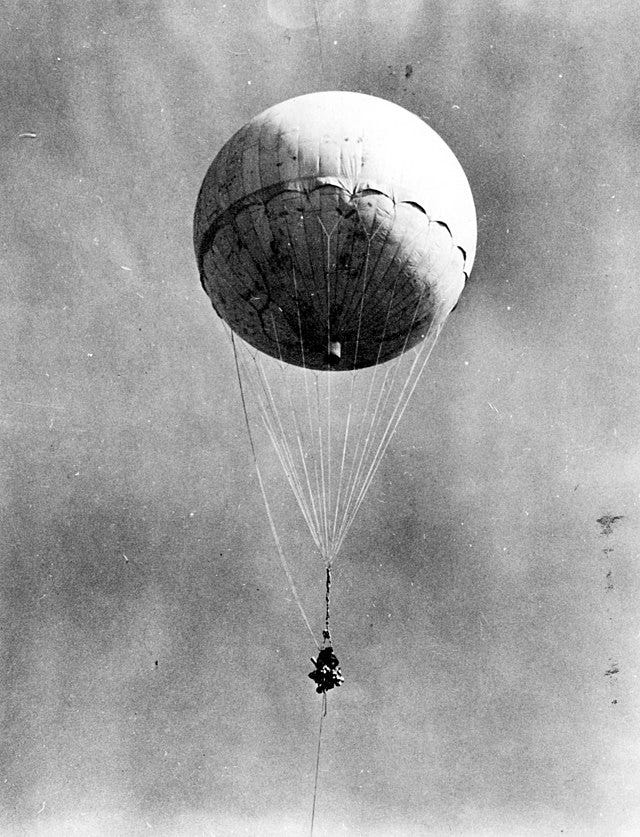Talking to America appears weekly at jackkellyattalkingtoAmerica.substack.com. Likes, Shares and Comments help spread the word. Tell your friends. Check out previous essays in the Archive. All support is appreciated. And please subscribe—it’s free.
The now infamous Chinese balloon incident of 2023 recalls a different and more tragic aerial phenomenon during World War II. In 1945, after two years of research, Japanese commanders responded to the American carpet bombing of Japanese cities by releasing nine thousand thirty-foot wide hydrogen balloons.
The balloons were calibrated to ascend to thirty thousand feet and drift across the Pacific. Designers equipped each one with a high-explosives device and several incendiary bombs. The intention was to ignite massive forest fires across the western U.S.
A Japanese scientist had discovered the jet stream during the 1920s. Military planners calculated that the high-altitude winds would carry the balloons across the ocean in three to five days. They used an automated mechanism to adjust their height by dropping sand bags. At least 350 balloons were known to have reached the U.S. They made it as far as Kansas, Texas and Michigan. Most came down in the Northwest.
In May 1945, a pastor named Archie Mitchell and his pregnant wife Elyse were taking five Sunday-school children for a picnic in the woods near Bly, Oregon. The site was about two hundred miles inland. When they arrived, Mitchell parked his car while Elyse and the children went to find a picnic site.
Each balloon—the first successful intercontinental weapons—was fashioned from layers of mulberry paper glued together with starchy organic paste. Much of the tedious work had been done by schoolgirls. The globe held aloft a small gondola with a battery, control mechanisms, sand bags, and explosives.
“As I got out of my car to bring the lunch,” Mitchell said in an interview, “the others were not far away and called to me they had found something that looked like a balloon. I had heard of Japanese balloons so I shouted a warning not to touch it. But just then there was a big explosion. I ran up there — and they were all dead.”
They were the only American civilians to be killed by enemy action on United States soil during World War II. Their story only gradually came to light—wartime censorship suppressed news of the bombs.
From the Japanese perspective, the program was a waste. It ignited no major fires—most of the balloons landed during the rainy season the Northwest. By May 1945, allied forces were defeating the enemy in the bloody battle at Okinawa and threatening the Japanese homeland.
Archie Mitchell later remarried and continued his pastoral efforts. He traveled to Vietnam to work in a leprosy hospital. In 1962, he and two other missionaries were captured by the guerrillas and dragged away into the jungle. They were not seen again.
The most recent discovery of the remains of a Japanese balloon bomb was in 2019, this one in McBride, British Columbia, some 450 miles northeast of Vancouver.





Jawdropping. Source for this? Have never heard a word about it